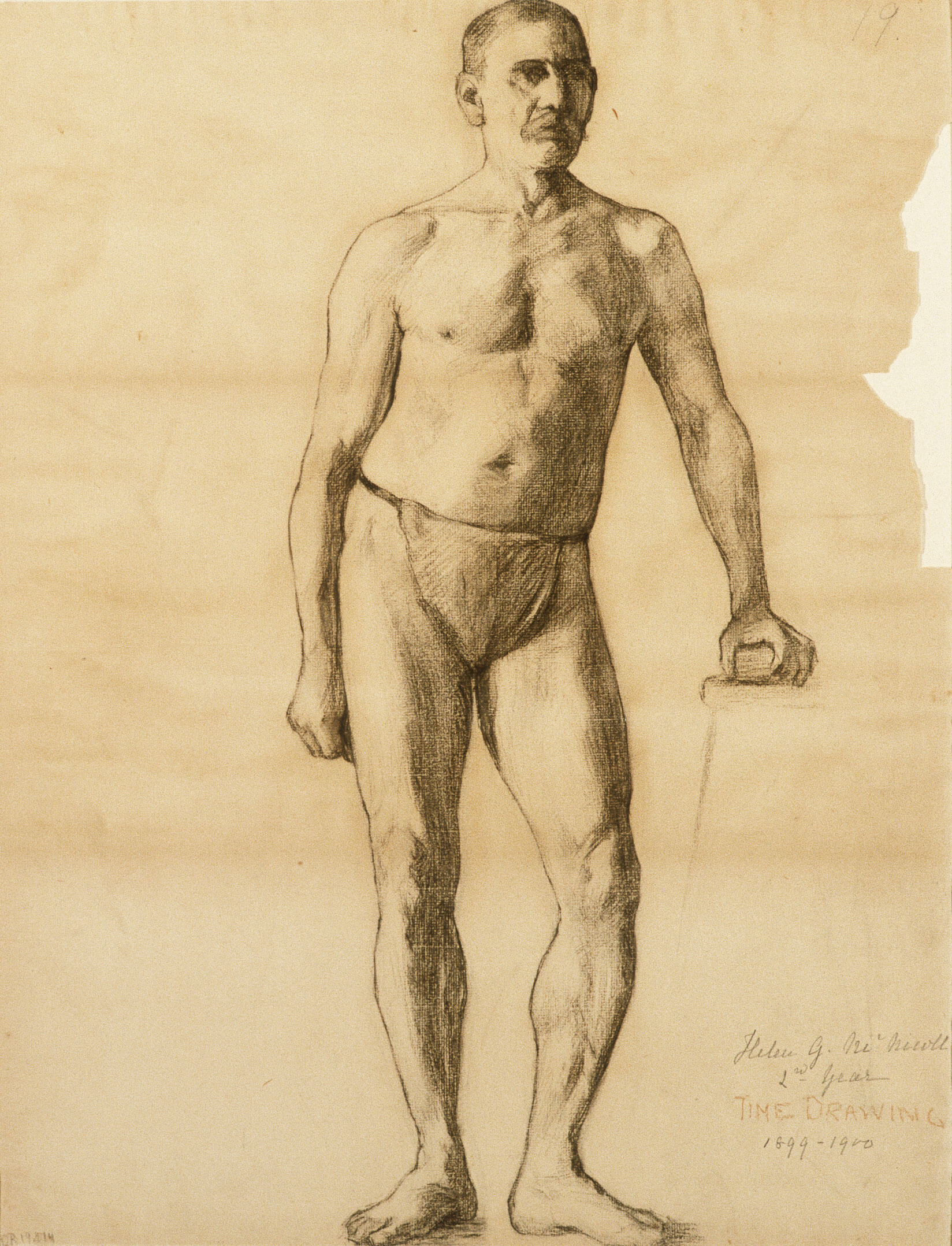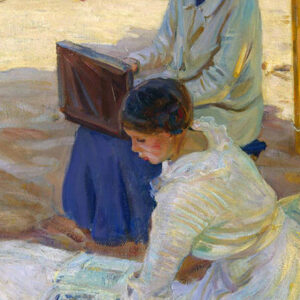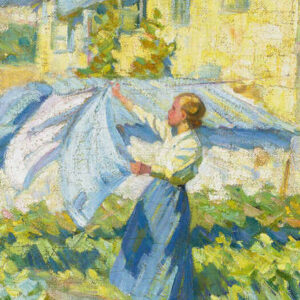Academy 1899–1900

Helen McNicoll, Academy, 1899–1900
Charcoal and pencil on paper, 61.8 x 47.4 cm
Montreal Museum of Fine Arts
This charcoal drawing demonstrates McNicoll’s skill in using light and shade to model the body, with careful attention to the musculature of the legs and chest. An inscription in the bottom corner labels it a “time drawing,” indicating that the sketch was the product of a timed exercise in which the model held a sequence of short poses while students attempted to capture his changing appearance. This pose shows the model’s weight being supported by his right leg as his left hand leans on a support, creating the ideal S-curvature of classical contrapposto. By these means McNicoll translated a real human body (most likely a working-class professional model) into the classical ideal—except for his prominent mustache.
![Sketch of Female Nudes from Dessin [sic] Sketchbook, c. 1902, Helen McNicoll](/wp-content/uploads/2020/09/art-books_27_helen-mcnicoll-sketch-of-female-nudes-from-dessin-sketchbook-contextual.jpg)
McNicoll produced this sketch while she was a student at the school of the Art Association of Montreal (AAM); the inscription records that she was in her second year. During her first year she had been awarded a scholarship for her skilled drawings of plaster casts. This sketch shows the kind of work expected of students training in the traditional academic curriculum modelled after the program at the École des Beaux-Arts in Paris. Students began by copying reproductions of works by Old Masters and sketching plaster casts. Only after they had perfected their technique did they move on to “life study”: drawing nude models to obtain a thorough understanding of anatomy and the way the body moved. However, this crucial exercise was thought to be dangerous for respectable women artists, and it was only at the end of the nineteenth century that they won admission to life classes. The AAM was relatively progressive in allowing female students access to nude study of both female and male models, although the men were draped.
While at the AAM, McNicoll studied with William Brymner (1855–1925), one of the foremost artists and teachers in Canada at the time. His support for young women artists and his interest in plein air painting and Impressionism must have had an important influence on McNicoll’s future work. After four years, she left Montreal in 1902 to enroll at the Slade School of Fine Art, in London, England—another school known for its progressive attitude to women’s art education—where she again worked with male and female models. Although McNicoll would turn away from a strictly academic style toward Impressionism, paintings such as The Apple Gatherer, c. 1911, and Under the Shadow of the Tent, 1914, provide a glimpse of her early study of the body and the subtleties of its movement.

 About the Author
About the Author
 More Online Art Books
More Online Art Books
 Acknowledgements
Acknowledgements